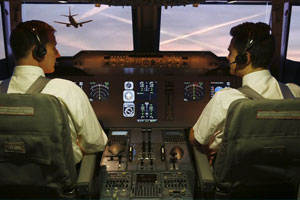
U.S. Chamber Opposes FAA Rest Rule
The organization's senior vice president of labor law, immigration & employee benefits sent a letter to OIRA's Cass Sunstein asking him "to ensure that the FAA develops a more narrowly focused and flexible rule."
The U.S. Chamber of Commerce has taken aim at the Federal Aviation Administration's proposed rule to further limit flight crew members' duty time, with the organization's senior vice president of labor, immigration & employee benefits, Randel K. Johnson, sending a letter to OIRA's Cass Sunstein asking him "to ensure that the FAA develops a more narrowly focused and flexible rule." The proposed rule would be much more costly than FAA has estimated and is "precisely the kind of rule that the Obama Administration is targeting for reform: a rule that renders a vital industry unnecessarily inefficient and uncompetitive but produces little or no benefit in the bargain," Johnson wrote.
OIRA, the Office of Information and Regulatory Affairs, is part of the federal Office of Management and Budget. Sunstein is the administrator of OIRA, which is a gatekeeper for proposed federal regulations. It is holding two OSHA proposals at the moment, a proposed rule governing workers' exposure to crystalline silica and a prerule item about reinforced concrete in construction. Interior's proposed rule to review safety and environmental management system requirements is also holding at OIRA. An hours of service final rule and a positive train control proposed rule from the Federal Railroad Administration are pending there, as are 24 items filed by EPA.
Mike Eastman, executive director of labor law policy for the U.S. Chamber, wrote about the flight crew rest rule in a blog post in which he said, "what is so shocking about the FAA's proposal is that it is a one-size fits all solution and ignores the important distinctions among many different types of operations in the air transport operation. As an example, consider the many distinctions between the traditional hub and spoke model used by many large passenger airlines as distinguished from cargo airlines, perhaps carrying military cargo into conflict areas. There's no second flight crew waiting in the conflict zone—you need to bring everyone with you. In addition to proposing a one-size fits all option, the rulemaking record makes it clear that the FAA did not even seriously consider alternative proposals that were raised in the rulemaking process. We filed comments with the FAA last year emphasizing this point.
Johnson's letter cites three "overriding defects" with the proposed regulation: There is no scientific support for the claim it will meaningfully improve safety, it will impose "dramatically increased costs on the U.S. airline industry, with severe downstream consequences for U.S. businesses and our nation's still-struggling economy," and it will negate technological advances in new equipment now being built into commercial airplanes.